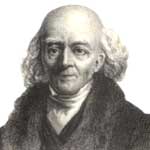We all know Dr. Samuel Hahnemann as the founder of Homoeopathic System of Medicine. The whole concept of homoeopathy is based on the laws and doctrines propounded by him namely the Law of Similars, Minimum Dose, and Single Remedy, the doctrine of Potentisation, doctrine of Vital Force, Drug Proving, Individualisation and Miasms.
Hahnemann’s Organon of Medicine is the high watermark of medical philosophy. It is an original contribution in the field of medicine. And the art aspect of homoeopathy has never remained stationary till date, and has been confirming the scientific aspect with the basic principles, more and more.
More than 200 years have passed, we have not been able to contradict this, in spite of tremendous changes that have taken place in the field of science in general and medicine in particular.
If by our good luck, Hahnemann were alive today, he would have seen how homoeopathy has progressed in the last two centuries after its discovery.
In those days, there were no laboratories or pharmacies established, the way we have them today. Dr. Hahnemann had to go through the tremendous task of identifying and collecting raw materials. We have, today, botanical herb supplying agencies and laboratories to test various chemicals and other crude drugs. In last two centuries, we have enriched our knowledge in pharmacodynamics of drugs or substances used in homoeopathy.
Proving of drugs was another field where he had to rely upon his own body or limited numbers of his disciples. No one would volunteer oneself for proving. Now, it is possible to find volunteer students and doctors from homoeopathic medical colleges, willing to offer themselves for drug proving.
In Hahnemann’s time, there were nearly 100 remedies were known to combat the ailments. Today we have more than 1500 remedies in our armamentarium and about the same number of remedies with clinical verifications.
The most strenuous and laborious part was preparation of medicines. In this 21st century, homoeopathic remedies are manufactured with the help of mechanical applications to perfection.
Analysing a case and finding the similimum from the limited provings and number of remedies for a case was not difficult. After Hahnemann more and more newer remedies were proved and reproved, pathogenesis of remedies increased many folds, thereby making difficulty in selecting the properly indicated remedy.
If Hahnemann were alive today, he would have found use of computers made this possible to evaluate a remedy for a case, and to find even an unusual presentation of a case from materia medicas, directly from provings, cured cases and compilations from different authors.
If Hahnemann were alive today, he would have found many homoeopaths going astray and giving a pathological twist to our science. No doubt pathology helps in diagnosis and prognosis but to some extent.
Hahnemann wanted that individual/patient should be studied from the standpoint of the whole organism rather than from that of mechanism. He regarded the whole organism as a unit of life rather any one part, any organ or any sub-system, as each part depends upon other parts, and will act together in unison as one in health or in disease.
And the homoeopathic Law of Similars requires similarity in symptoms of disease and drug, and nothing more.
With the help of this scientific art a new or unknown disease can be correctly and successfully treated unbiased of their pathological origin when the symptoms of disease are known. As today we are able to treat the conditions like Cancer, Drug Addiction, AIDS, etc.
If Hahnemann were alive today, he would have found some leading and top professional homoeopaths are rather unapproachable to youngsters, the graduates of our colleges or other enthusiastic amateurs. Perhaps the present day competitive pressures have made them more selfish and self-centered.
But Hahnemann gave out all his discoveries and knowledge to his disciples and to anyone who wanted to try his new system.
If Hahnemann were alive today, he would have seen that some homoeopaths are in favour of mixopathy and poly prescriptions.
While Hahnemann was very clear in his verdict of using single remedy at one time and very strict in prohibiting the use of more than one remedy at the same time.
Hahnemann was against this type of practice. He always insisted that single remedy had been used in proving and elicited its curative symptoms, using of combinations without the full knowledge of their pathogenesis is contrary to the basis of homoeopathy i.e. Similia Similibus Curantur and Similia Simplex Minimi.
As for the selection of the potency, a careful prescriber is expected to use his ingenuity and intellectual judgment on the basis of his experience based on keen observations, keeping in view the patient’s sensitivity and susceptibility in all respects.
To conclude with, one should practice rational homoeopathy for the good of mankind.
